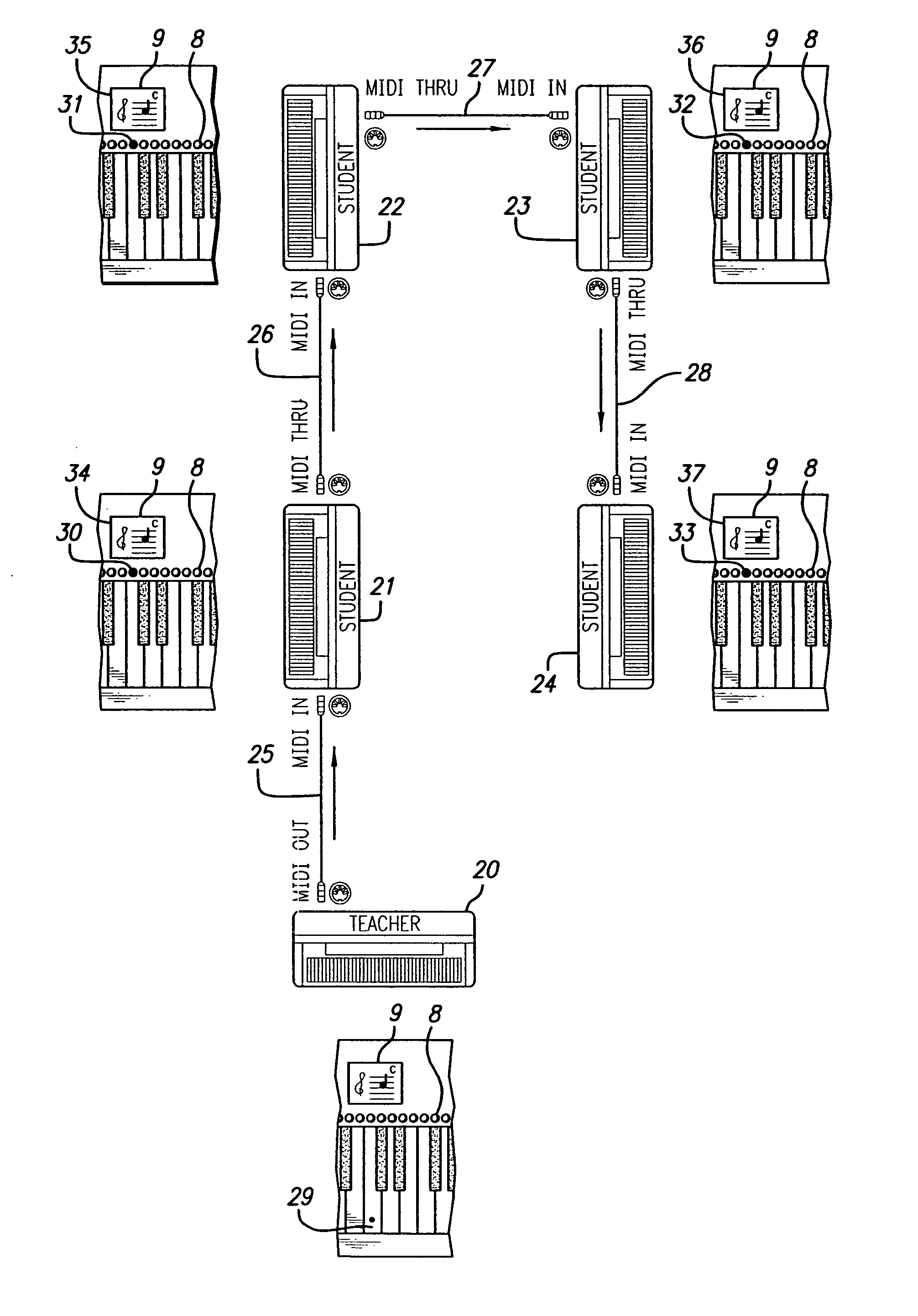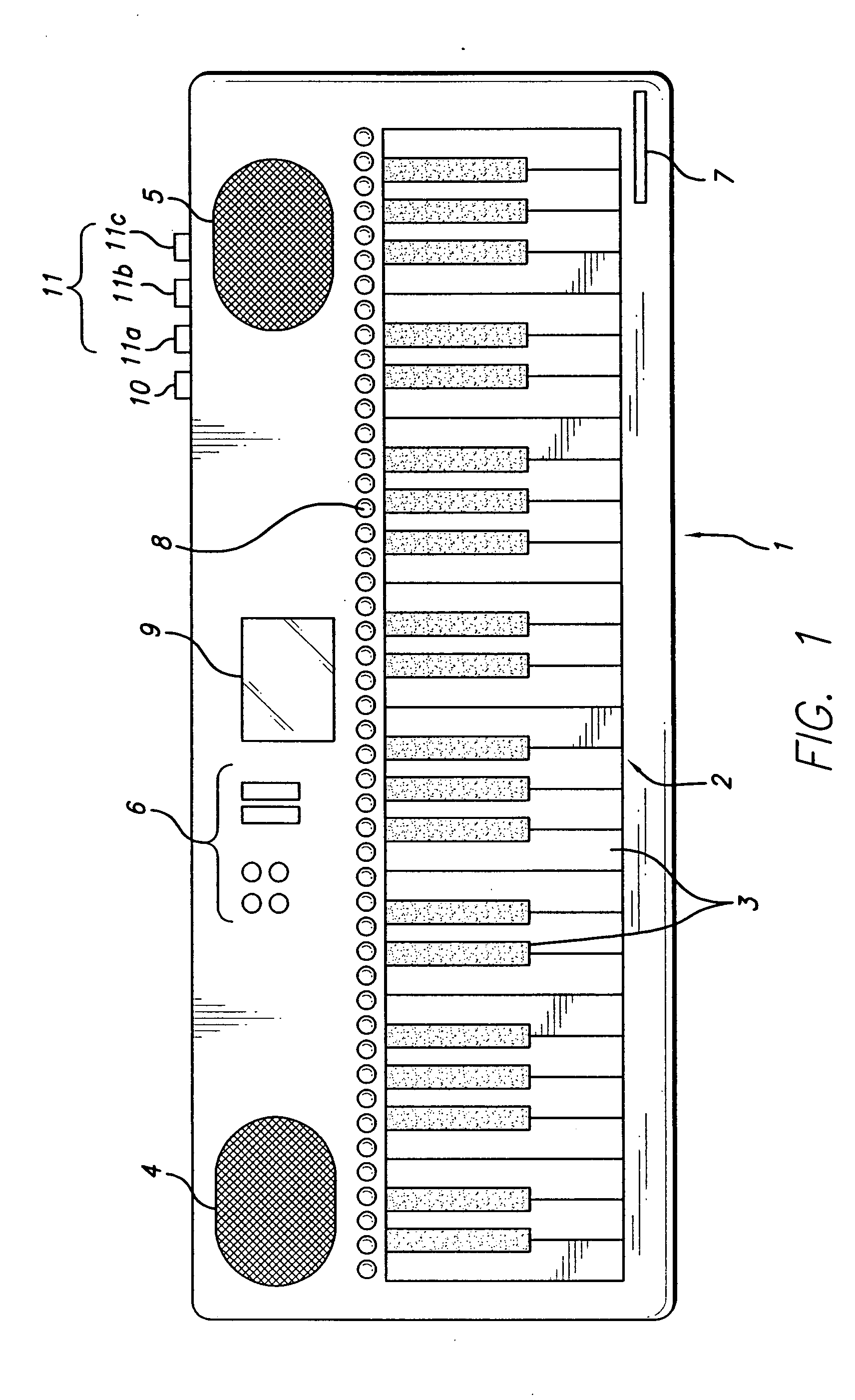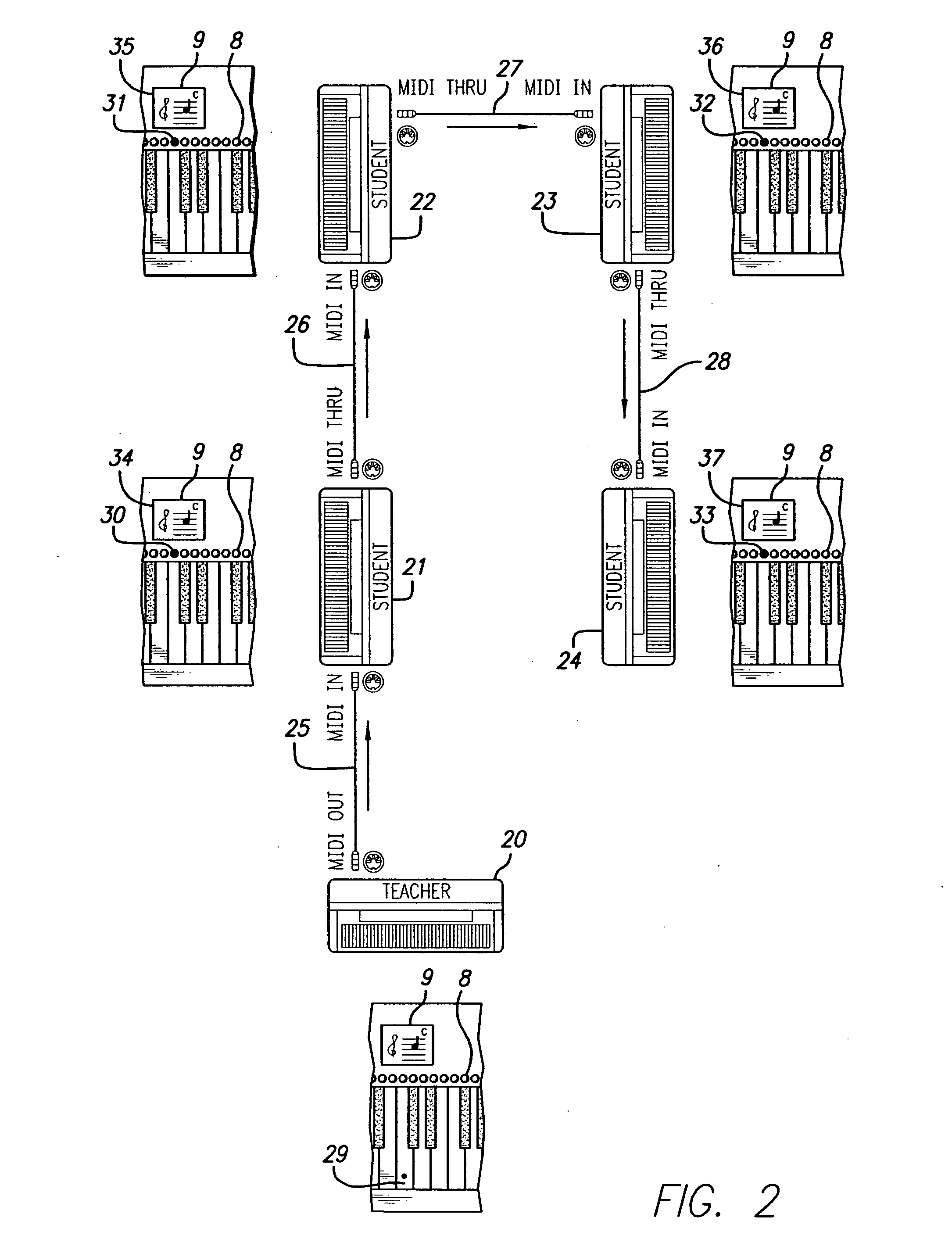Method for teaching music
a teaching method and music technology, applied in the field of teaching music, can solve the problems of limited individual teaching methods, difficult to understand, and difficult to learn music,
- Summary
- Abstract
- Description
- Claims
- Application Information
AI Technical Summary
Benefits of technology
Problems solved by technology
Method used
Image
Examples
first embodiment
[0044] The daisy chain network of electronic musical instruments in FIG. 2 can be used to implement the present invention for group instruction. Electronic musical instrument 20 is played by an instructor while electronic musical instruments 21, 22, 23 and 24 are played by students. The instructor depresses a key on his electronic musical instrument. This is indicated in FIG. 2 by the partial detailed view of the panel and keyboard of electronic musical instrument 20. The black dot on key 29 indicates that the instructor has played note C. Of course, more than one key at a time can be depressed in the present embodiment.
[0045] The instructor's key depression produces lamp control data that illuminates in real-time the guide lamps 8 of each student's electronic musical instrument. This is achieved through a preparatory SysEx message. Specifically, prior to instruction, a facilitator disk is inserted in the storage device 7 of the instructor's electronic musical instrument. The disk i...
second embodiment
[0064] the present invention is directed to remote instruction of a student or a group of students via a communication network such as the Internet. In this embodiment, an instructor plays notes on a musical instrument connected to the Internet. Students, at different locations, are also connected to the Internet through communication interface 6 of their respective musical instruments. Some of the students may be connected to the Internet through a computer coupled to their respective electronic musical instruments.
[0065] MIDI data is sent from the instructor's electronic musical instrument through the Internet and is received by each student's electronic musical instrument or computer. The MIDI data comprises the data to perform the instruction methods discussed above. For example, as the instructor plays a note, MIDI data comprising lamp control data, as opposed to note playing data, is transmitted to the students' musical instruments over the Internet. The lamp control data driv...
PUM
 Login to View More
Login to View More Abstract
Description
Claims
Application Information
 Login to View More
Login to View More - R&D
- Intellectual Property
- Life Sciences
- Materials
- Tech Scout
- Unparalleled Data Quality
- Higher Quality Content
- 60% Fewer Hallucinations
Browse by: Latest US Patents, China's latest patents, Technical Efficacy Thesaurus, Application Domain, Technology Topic, Popular Technical Reports.
© 2025 PatSnap. All rights reserved.Legal|Privacy policy|Modern Slavery Act Transparency Statement|Sitemap|About US| Contact US: help@patsnap.com



